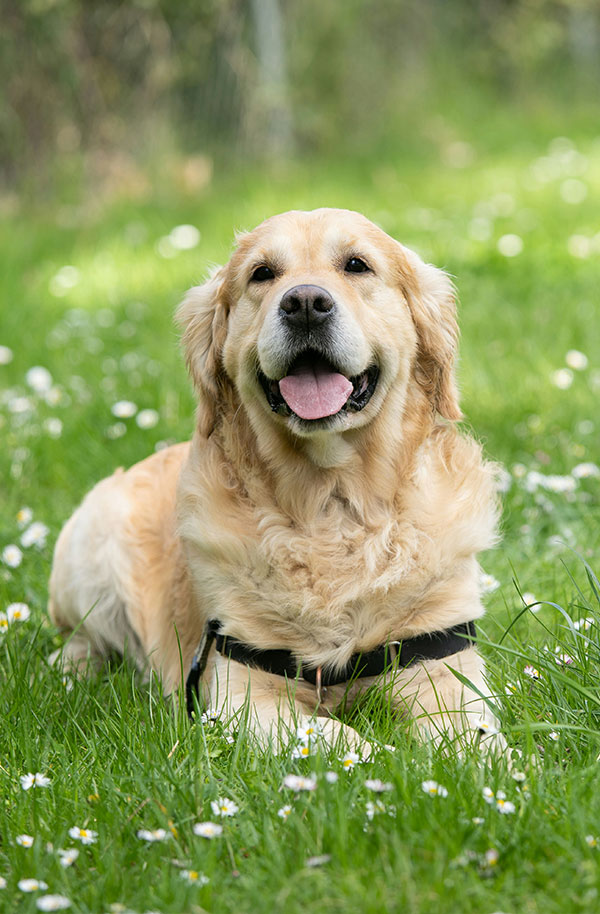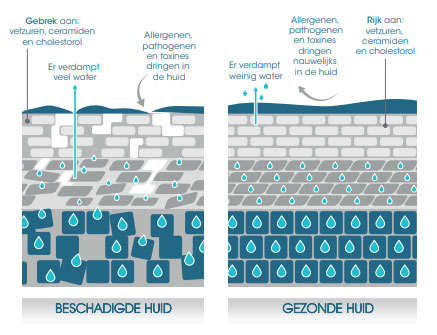What does the skin tell us?
The power of an intact skin barrier
The skin barrier plays a central role in the overall skin health of companion animals. When that barrier becomes unbalanced, it is almost always reflected in the clinical picture: scaling, itching, redness, recurrent infections or oily, irritated skin.
The image on the right shows a clear comparison between a damaged and a healthy skin barrier. On the left, the skin lacks essential components: fatty acids, ceramides and cholesterol. This deficiency leads to increased moisture evaporation (TEWL) and makes the skin more sensitive to external influences. Allergens, pathogens and toxins can penetrate more easily, with consequences.
On the right, we see what happens when that same skin barrier is in order. Skin that does contain sufficient lipids retains moisture and forms a more effective physical barrier against unwanted substances. The moisturizers that contribute to this - such as hyaluronic acid, glycerin, urea and propylene glycol - actively support the hydration of the stratum corneum and strengthen the skin's protective functions.
What this illustration makes clear is that moisturizing is more than a cosmetic step. It is a functional part of skin repair, especially in animals with sensitive or affected skin. By understanding how and where the skin barrier is failing, you can provide more targeted advice as a veterinarian - even when it comes to non-medicated support.
Maxani's AtopOat line is specifically designed to support the skin barrier in companion animals. This line contains ingredients such as ceramides, hyaluronic acid and oatmeal extract, which help to repair the skin and reduce transepidermal moisture loss. The line consists of a cream, a mousse and a skin shampoo, making an appropriate form of care available for different situations and applications.


